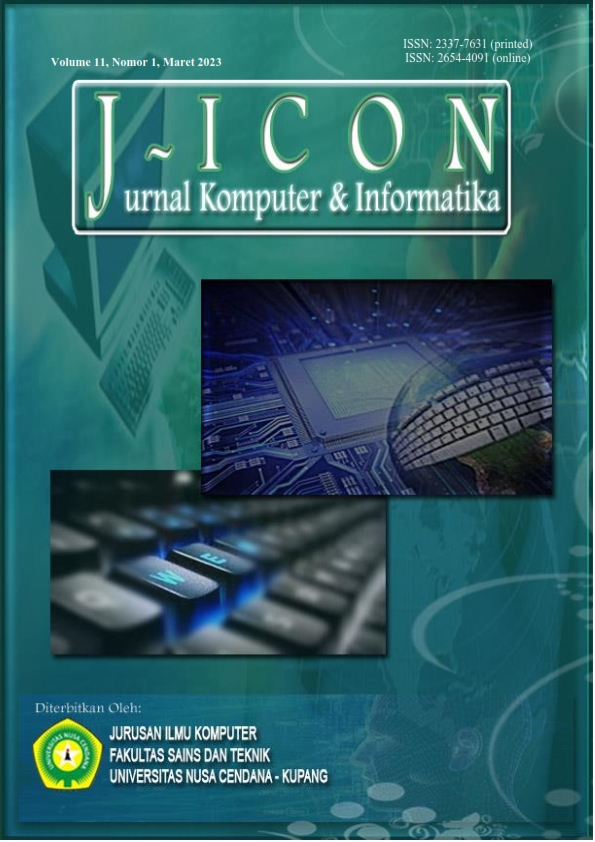FUZZY TSUKAMOTO IMPLEMENTATION FOR EMPLOYEE RECRUITMENT
CASE STUDY: KONSULTAN TEKNIK INFORMASI COMPANY
Abstract
A qualified workforce in a company is an essential asset to support the company's business goals. As a company grows, companies begin to understand patterns of qualified employees to be recruited and retained. This pattern is then used as employee recruitment criteria. However, as the number of applicants increases, companies become overwhelmed in assessing and comparing one prospective employee with another, as a result, the employee recruitment process becomes longer. One of the companies experiencing this problem is a Konsultan Teknik Informasi (KTI) Company which is the object of this research. The company, founded in 2008, has experienced an average increase in employee recruitment of 48% annually and a moderate increase in employee turnover of 11% annually. Of course, the number of applicants evaluated for acceptance will be more significant than those accepted for work. Therefore, this KTI company needs a decision support method that can quickly help select employees based on predetermined criteria and rank prospective employees who best meet the criteria. The decision support method proposed by the researcher is the Fuzzy Tsukamoto method. Fuzzy Tsukamoto is used because it can accommodate experts' opinions by making membership functions and rule base matrix. Each input value obtained from the prospective employee data is mapped in the membership functions and rule base matrix through a fuzzification process. This is then defuzzification to produce an output value that can be used to rank prospective employees. Tests carried out on three prospective employee data obtained crisp output values of 6.70, 6.58, and 6.42, respectively, with the largest value being the highest rank.
Downloads
References
D. B. Morgan, Management Strategies for Reducing Voluntary Employee Turnover in Small, Walden University, Doctoral Dissertation, 2019.
R. M. Guion, S. Highhouse and D. Doverspike, Essentials of Personel Assesment and Selection, New York: Routledge, 2016.
C. F. Chien and L. F. Chen, “Data mining to improve personnel selection and enhance human capital: A case study in high-technology industry,” Expert Systems with Applications., vol. 34, no. 1, pp. 280-290, 2008, doi: https://doi.org/10.1016/j.eswa.2006.09.003.
G. Serhadlıoğlu, Z. Güngöra and S. E. Kesen, “A fuzzy AHP approach to personnel selection problem,” Applied Soft Computing, vol. 9, no. 2, pp. 641-646, 2009, doi: https://doi.org/10.1016/j.asoc.2008.09.003.
F. D. Ragestu and A. J. Sibarani, “Penerapan Metode Fuzzy Tsukamoto Dalam Pemilihan Siswa Teladan di Sekolah,” Teknika, vol. 9, no. 1, pp. 9-15, 2020, doi: https://doi.org/10.34148/teknika.v9i1.251.
Y. Ferdiansyah and N. Hidayat, “Implementasi Metode Fuzzy - Tsukamoto Untuk Diagnosis Penyakit Pada Kelamin Laki Laki,” Jurnal Pengembangan Teknologi Informasi dan Ilmu Komputer, vol. 2, no. 12, pp. 7516-7520, 2018. [Online]. Available: https://j-ptiik.ub.ac.id/index.php/j-ptiik/article/view/3994. [Accessed: 25-Mar-2023]
A. Setiawan, B. Yanto and K. Yasdomi, Logika Fuzzy Dengan Matlab: Contoh Kasus Penelitian Penyakit Bayi Dengan Fuzzy Tsukamoto, Denpasar: Jayapangus Press, 2018.
D. N. Utama, Sistem Penunjang Keputusan: Filosofi, Teori dan Implementasi, Yogyakarta: Penerbit Garudhawaca, 2017.
A. J. Rindengan and Y. A. R. Langi, Sistem Fuzzy, Bandung: CV. Patra Media Grafindo, 2019.
N. Febriany, “Aplikasi Metode Fuzzy Mamdani Dalam Penentuan Status Gizi dan Kebutuhan Kalori Harian Balita Menggunakan Software MATLAB,” Jurnal EurekaMatika, vol. 5, no. 1, pp. 84-96, 2016, doi: https://doi.org/10.17509/jem.v5i1.10300.
S. Kusumadewi and H. Purnomo, Aplikasi Logika Fuzzy Untuk Pendukung Keputusan, Yogyakarta: Graha Ilmu, 2010.
Copyright (c) 2023 Clarissa Elfira Amos Pah, Juan Rizky Mannuel Ledoh

This work is licensed under a Creative Commons Attribution 4.0 International License.
The author submitting the manuscript must understand and agree that if accepted for publication, authors retain copyright and grant the journal right of first publication with the work simultaneously licensed under a Creative Commons Attribution (CC-BY) 4.0 License that allows others to share the work with an acknowledgment of the work’s authorship and initial publication in this journal.
 Clarissa Elfira Amos Pah(1*)
Clarissa Elfira Amos Pah(1*)




